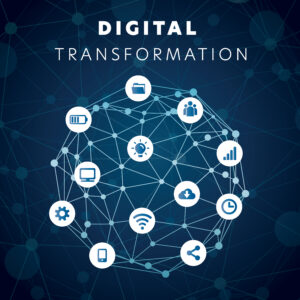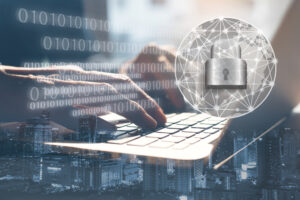As 2022 draws to a close it will be remembered as the year in which technology scaled up globally and the rules of the new normal became simple – digitalise or fall behind. This trend will see us move into a world of hyperconnected interoperable environments with increasing reliance on immersive interaction between the employees, partners, suppliers, and customers of an enterprise. In this blog, Amitabh Sarkar, Vice President & Head of Asia Pacific and Japan – Enterprise, Tata Communications, discusses key trends we will see in 2023 as technology continues to evolve.
Thriving in this new normal will require an ongoing digital transformation not just for enterprises but for the entire ecosystem that creates and delivers business value. Hence the need for hyperconnectivity – a near real-time seamless connected platform that allows people and machines to communicate and collaborate effectively to deliver the best possible business outcomes.
Hyperconnected ecosystems are heavily dependent on technology and businesses need the right infrastructure, applications, processes and skills to maximise connection and collaboration for all stakeholders.
As the digital transformation continues, CIOs need to work with a broad group of technology vendors and expert partners to build solutions for connectivity, cloud, collaboration, Internet of Things (IoT), and security, all of which involves an incredible level of complexity.
They also need partners who can help to simplify and manage this complexity by providing end-to-end solutions.
Tata Communications has the tools, platforms, skills and expertise to help you build an agile platform that enables compelling employee and customer experiences, deploy connected solutions and build digital trust. With our solutions-oriented approach, proven managed-service capabilities and cutting-edge infrastructure, we enable a hyperconnected ecosystem powered by cloud, mobility, IoT, collaboration, security and network services.
to help you build an agile platform that enables compelling employee and customer experiences, deploy connected solutions and build digital trust. With our solutions-oriented approach, proven managed-service capabilities and cutting-edge infrastructure, we enable a hyperconnected ecosystem powered by cloud, mobility, IoT, collaboration, security and network services.
As we march into 2023, let’s look at the technology trends which have truly made an impact on the business world.
Looking back to look forward
There were a number of innovations in the digital world that benefitted businesses and their customers this year.
Enterprise businesses need to build trust across their digital ecosystems. That means maintaining the integrity and security of all transactions and data, being transparent about data privacy, and complying with regulations.
Achieving this remains a challenge, however, in the face of constantly evolving threats, lack of security skills and stringent data privacy requirements, “Digital Trust” programmes are one of the highest priorities of global business leaders. With remote working and the adoption of 5G and IoT, managing and reducing risk has become even more complicated. This evolving landscape requires businesses to deploy an average of over 45 cybersecurity-related tools, increasing the complexity of their security and reducing its effectiveness.
CIOs need a partner who can help them manage risks, simplify operational complexity, and ensure all customer data and interactions are secure and handled with trust.
 At Tata Communications we have rapidly provisioned secure access for over 50,000 users within days. Our state-of-the-art Cyber Security Response Centre analyses close to 10 billion threats every day, and we helped mitigate more than 250 DDoS attacks for a bank, saving them millions of dollars in potential losses.
At Tata Communications we have rapidly provisioned secure access for over 50,000 users within days. Our state-of-the-art Cyber Security Response Centre analyses close to 10 billion threats every day, and we helped mitigate more than 250 DDoS attacks for a bank, saving them millions of dollars in potential losses.
Recent high-profile breaches of Australian companies have accelerated efforts to fast-track ‘Digital Trust’ initiatives. The Tata Communications full suite of cyber security services protects entire IT infrastructures from cloud to endpoints. The cloud-delivered services leverage indigenously built, open extended detection and response (XDR) architecture, security analytics, automation, and threat intelligence platforms that deliver unified security visibility, faster detection, and response to threats. Our award-winning services are provided by skilled security staff remotely, on-premises, or in a hybrid model to simplify security management.
At the same time, breakthroughs in 5G and LTE data networks have led to greater enterprise innovation. With 5G, we are keen to support enterprises achieve their business goals and explore new revenue streams. We have built a Global Private 5G Centre of Excellence and are testing several Private 5G use cases such as automated quality inspection of equipment using video and image analytics, inventory management and asset tracking, warehouse theft detection, AR/VR-based remote worker collaboration, video-powered retail purchase, and much more.
We have also engaged with C-suites from the banking and financial services industry to understand their challenges and priorities regarding the customer experience, customer retention and how disruptive technology is helping them achieve their goals. The findings on Banking, Financial services and Insurance (BFSI) showed more enterprises are using digital technologies to improve customer experience at physical points such as ATMs and self-service lobby kiosks.
Some 72 per cent of enterprises reported that these tools had the biggest impact in helping them reach new customers as well as retain old ones. They not only reduced the number of time-consuming tasks for employees but also improved overall customer service.
In APAC, we work with some of the largest banks and in addition to delivering a superior customer experience we are enabling them to build software-defined networks and deliver savings. We also work with some of the best-known retail and OTT customers who leverage our cloud-based customer interaction platform that integrates voice, video, text, social message, and IVR, giving customers an omnichannel experience.
The airline, transport and utilities sectors also leverage our connected workforce & connected partner portfolio to deliver enhanced customer experiences for their employees and customers.
What’s next in 2023?
If we look to the foreseeable future, technology is bound to change and companies must be ready to reinvent themselves. Sustainability will be key to how enterprises are able to deliver impact while concepts such as the metaverse will continue to evolve till people figure out how to make it meaningful. Also look out for:
technology is bound to change and companies must be ready to reinvent themselves. Sustainability will be key to how enterprises are able to deliver impact while concepts such as the metaverse will continue to evolve till people figure out how to make it meaningful. Also look out for:
- An increase in cybersecurity: APAC organisations will invest more in cybersecurity as cyber-threats continue to rise. Supply chains and governments were the core targets of bad actors this year, so cybersecurity will continue to be a key focus for all organisations in 2023.
- Virtual workspaces: Digital-first customer interaction platforms such as Tata Communications DIGO are allowing businesses and customers to engage across multiple platforms including voice, SMS, email, social messaging, video, text to speech, IVR, chatbot and more. Tata Communications DIGO is an in-network cloud communications platform that offers intelligent, 360-degree human-to-everything (H2X) interactions for its users. These solutions are in very high demand and businesses will continue to reimagine the office landscape of the digital world. At the same time, metaverses and other virtual spaces will provide an immersive shared space for companies and may slowly develop their own virtual economies using digital currencies.
- Next-generation AI: APAC enterprises will continue to adopt machine learning and artificial intelligence solutions to improve their customer service and contact centre functions.
- Network modernisation: Network modernisation is another crucial piece in the digital enterprise puzzle. As companies become more connected, expand operations into newer markets, deploy distributed applications and tap into a geographically dispersed labour pool, their network architecture must be able to readily support distributed applications deployed in the cloud, on-premises and at emerging collection ‘edges’. For all of this to happen seamlessly, a predictable network performance and strong security controls will become even more essential.
- Sustainable technology: Climate change is a top priority for business leaders and more attention is being paid towards Environmental Social Governance (ESG) efforts to meet sustainability goals. This means digital strategy and sustainability will become increasingly important and intertwined. Communications and collaboration solutions are one of the widely adopted digital technologies in which organisations can look to minimise their environmental footprint. Asia Pacific’s carbon emissions actually fell from nearly 17.18 billion metric tonnes in 2019 to 16.75 billion metric tonnes this year, according to research company Statista. This can be partly attributed to COVID-19 restrictions and the proliferation of remote working. By continuing to support remote or hybrid working models, organisations can lower their carbon emissions by cutting down on travelling and commuting.
It’s an exciting time going forward. The year ahead is likely to see more accessible solutions, a push for more customer preferences and an increase in employee collaboration, all in an increasingly hyper-connected digital world.
Get in touch with us to learn more about our solutions that enable you to provide the best user experience and seamlessly expand your business across the globe.
Transformational Hybrid SolutionsOur cloud-enablement services offer the best performance on your traffic-heavy websites or mission-critical applications.
Core NetworksTata Communications™ global IT infrastructure and fibre network delivers the resources you need, when and where you need them.
Network Resources
Unified Communications As A ServiceBreak the barriers of borders efficiently and increase productivity with Tata Communications’ UC&C solutions.
Global SIP ConnectEmpower your business with our SIP network and witness it grow exponentially.
InstaCC™ - Contact Centre As A ServiceCloud contact centre solutions for digital customers experience and agent productivity.
Unified Communication Resources Case studies, industry papers and other interesting content to help you explore our unified communications solution better.
IoT SolutionsThe Internet of Things is transforming the way we experience the world around us for good. Find out more about our Internet Of Things related solutions here.
Mobility SolutionsTata Communications’ mobility services enable your enterprise to maintain seamless communication across borders, with complete visibility of cost and usage.
Mobility & IoT Resources
Multi-Cloud SolutionsWith enterprises transitioning to a hybrid multi-cloud infrastructure, getting the right deployment model that yields ROI can be a daunting task.
Cloud ComplianceCompliant with data privacy standards across different countries and is also designed to protect customers’ privacy at all levels.
IZO™ Cloud Platform & ServicesIZO™ is a flexible, one-stop cloud enablement platform designed to help you navigate complexity for more agile business performance.
Managed Infrastructure ServicesIntegrated with our integrated Tier-1 network to help your business grow efficiently across borders.
Cloud PartnersWe support a global ecosystem for seamless, secure connectivity to multiple solutions through a single provider.
Cloud Resources
Governance, Risk, and ComplianceRisk and Threat management services to reduce security thefts across your business and improve overall efficiencies and costs.
Cloud SecurityBest-in-class security by our global secure web gateway helps provide visibility and control of users inside and outside the office.
Threat Management - SOCIndustry-leading threat-management service to minimise risk, with an efficient global solution against emerging security breaches and attacks.
Advanced Network SecurityManaged security services for a predictive and proactive range of solutions, driving visibility and context to prevent attacks.
Cyber Security ResourcesCase studies, industry papers and other interesting content to help you explore our securtiy solution better.
Hosted & Managed ServicesTata Communications provide new models for efficient wholesale carrier voice service management. With our managed hosting services make your voice business more efficient and better protected
Wholesale Voice Transport & Termination ServicesYour long-distance international voice traffic is in good hands. End-to-end, voice access & carrier services which includes voice transport and termination with a trusted, global partner.
Voice Access ServicesTata Communication’s provide solutions which take care of your carrier & voice services, from conferencing to call centre or business support applications.
Carrier Services Resources
CDN Acceleration ServicesOur CDN Web Site Acceleration (WSA) solution helps deliver static and dynamic content, guaranteeing higher performance for your website.
CDN SecuritySafeguard your website data and customers’ information by securing your website from hacks and other mala fide cyber activities.
Video CDNDeliver high-quality video content to your customers across platforms – website, app and OTT delivery.
CDN Resources
Elevate CXIncrease customer satisfaction while empowering your service team to deliver world-class customer experience and engagement.
Live Event ServicesTata Communications’ live event services help battle the share if eyeballs as on-demand video drives an explosion of diverse content available on tap for a global audience.
Media Cloud Infrastructure ServicesTata Communications’ media cloud infrastructure offers flexible storage & compute services to build custom media applications.
Global Media NetworkTata Communications’ global media network combines our expertise as a global tier-1 connectivity provider with our end-to-end media ecosystem.
Use CasesUse cases of Tata Communications’ Media Entertainment Services
Remote Production SolutionsMedia contribution, preparation and distribution are highly capital-intensive for producers of live TV and video content, and their workflows are complex.
Media Cloud Ecosystem SolutionsThe Tata Communications media cloud infrastructure services offer the basic building blocks for a cloud infrastructure-as-a-service.
Global Contribution & Distribution SolutionsTata Communications’ global contribution and distribution solution is built to reduce capital outlay and grow global footprint.
Satellite Alternative SolutionsAs more and more consumers choose to cut the cord & switch to internet-based entertainment options, broadcasters are faced with capital allocation decisions.
LeadershipA look into the pillars of Tata communications who carry the torch and are living embodiment of Tata’s values and ethos.
Culture & DiversityHere at Tata Communications we are committed to creating a culture of openness, curiosity and learning. We also believe in driving an extra mile to recognize new talent and cultivate skills.
OfficesA list of Tata Communications office locations worldwide.
FAQCheck out our FAQs section for more information.
SustainabilityOur holistic sustainability strategy is grounded in the pillars of People, Planet and Community with corporate governance at the heart of it.
BoardHave a look at our board of members.
ResultsFind out more about our quarterly results.
Investor PresentationsFollow our repository of investor presentations.
FilingsGet all information regarding filings of Tata communications in one place.
Investor EventsAll investor related event schedule and information at one place.
GovernanceAt Tata, we believe in following our corporate social responsibility which is why we have set up a team for corporate governance.
SharesGet a better understanding of our shares, dividends etc.
SupportGet all investor related contact information here.


